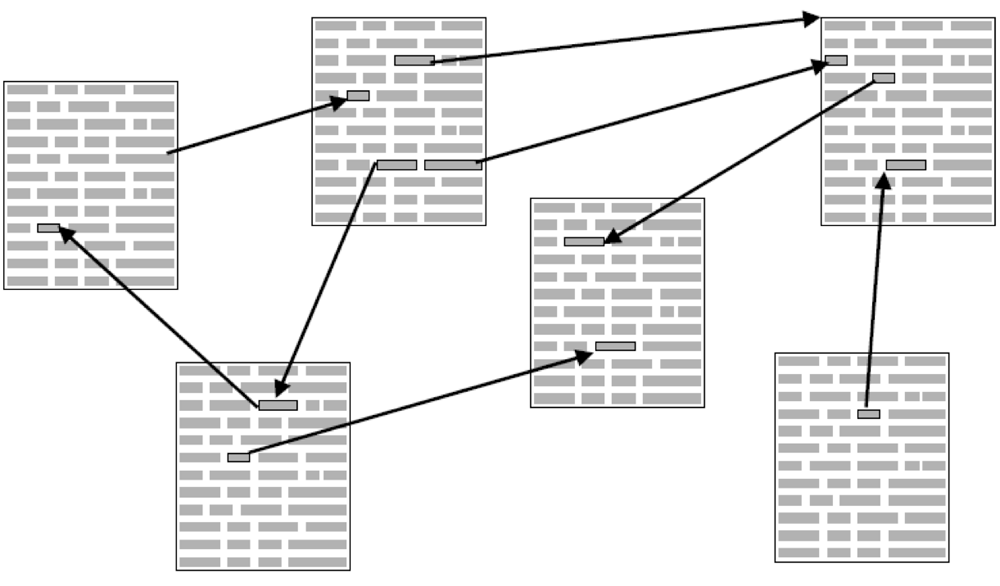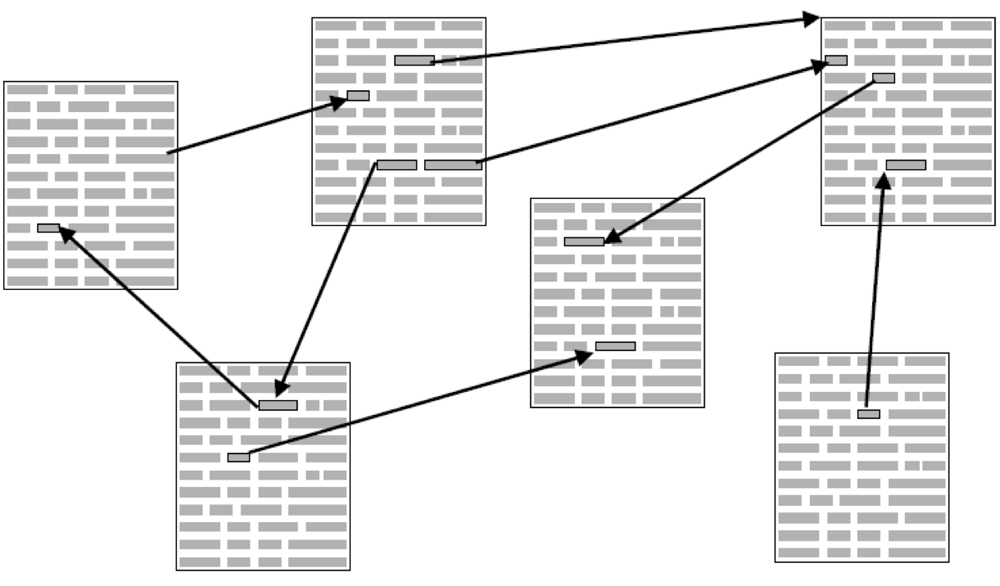
Inreading and thinking about hypertext, I also found myself interested in the point the Cara’s blog post raised, that through hypertext digital publishing allows texts to be “woven together.” When learning about hypertext in previous publishing courses, we’ve discussed the ways in which texts are already linked to each other, particularly academic articles that cite each other. When these articles are published in a print format, the texts are linked through bibliographical citations, which allows readers to find the sources that the author is referring to.
This process, however, can be arduous. In the past, when researching for academic papers, the author of the article I’m reading will make an offhand mention of another article or study that I’d like to know more about. In order to find this source, I have to locate the citation, find the source on the works cited list, and then use the a library database to try to locate this source. It would certainly make my life easier if I could just click a hyperlink to this source and have it waiting in a new tab, if I had access to “the ultimate archive” that Barnet and Darren’s article discusses (283). Not to beat the dead horse that is Wikipedia as hypertext, but the reason it’s so easy to fall down a “Wikipedia rabbit hole” is that it makes it exceedingly easy to learn more about any unfamiliar topics that you come across.
I also find it interesting that Barnet and Darren discuss this hypothetical hypertext archive as “non-linear” (283), which suggests that hypertext changes the way we read. We no longer have to read one article from beginning to end, but can jump to a new topic whenever we want. We can toggle back and forth between two articles, or skip to the sections that most interest us. We don’t have to move things in a chronological order, or any order at all. This is a fascinating and interesting prospect–it seems similar to the natural flow of a conversation or the scattered nature of thought patterns, meaning it might be useful for brainstorming or collaboration. Then again, I worry what might get lost in the hypertext shuffle, whether this is an effective way for us to organize and take in information. I don’t have an answer for that question, but I think it’s one that’s certainly important to considerin relation to digital publishing, as new ways of using hypertext become more and more prominent.
Words: 412
Works cited: Barnet, Belinda, and Darren Tofts. “Too Dimensional: Literary and Technical Images of Potentiality in the History of Hypertext.”
